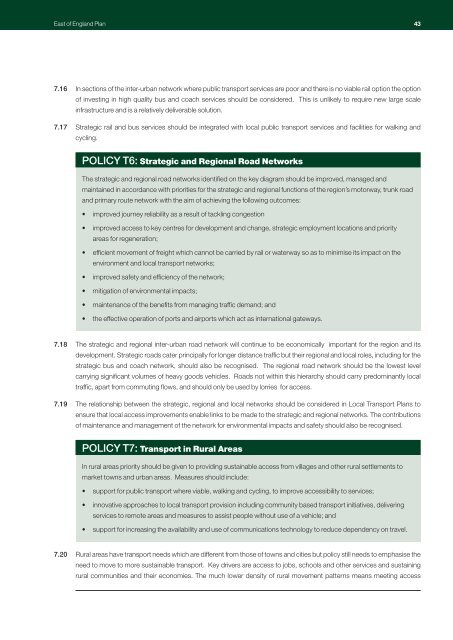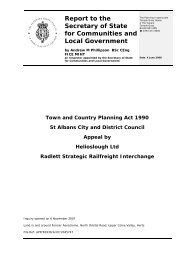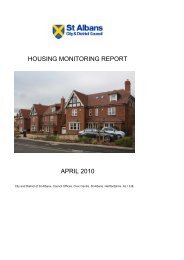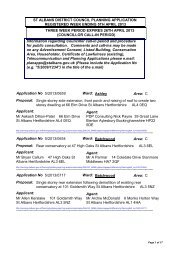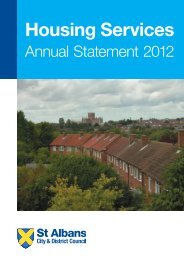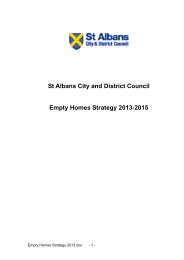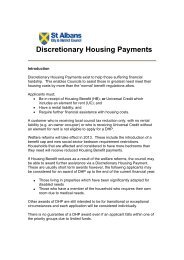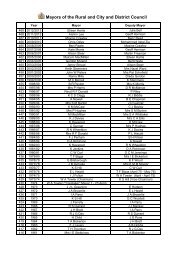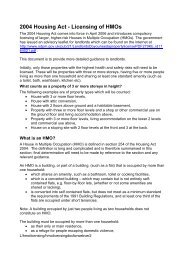RSS East Of England Plan - Broads Authority
RSS East Of England Plan - Broads Authority
RSS East Of England Plan - Broads Authority
Create successful ePaper yourself
Turn your PDF publications into a flip-book with our unique Google optimized e-Paper software.
<strong>East</strong> of <strong>England</strong> <strong>Plan</strong> 43<br />
7.16 In sections of the inter-urban network where public transport services are poor and there is no viable rail option the option<br />
of investing in high quality bus and coach services should be considered. This is unlikely to require new large scale<br />
infrastructure and is a relatively deliverable solution.<br />
7.17 Strategic rail and bus services should be integrated with local public transport services and facilities for walking and<br />
cycling.<br />
POLICY T6: Strategic and Regional Road Networks<br />
The strategic and regional road networks identified on the key diagram should be improved, managed and<br />
maintained in accordance with priorities for the strategic and regional functions of the region’s motorway, trunk road<br />
and primary route network with the aim of achieving the following outcomes:<br />
• improved journey reliability as a result of tackling congestion<br />
• improved access to key centres for development and change, strategic employment locations and priority<br />
areas for regeneration;<br />
• efficient movement of freight which cannot be carried by rail or waterway so as to minimise its impact on the<br />
environment and local transport networks;<br />
• improved safety and efficiency of the network;<br />
• mitigation of environmental impacts;<br />
• maintenance of the benefits from managing traffic demand; and<br />
• the effective operation of ports and airports which act as international gateways.<br />
7.18 The strategic and regional inter-urban road network will continue to be economically important for the region and its<br />
development. Strategic roads cater principally for longer distance traffic but their regional and local roles, including for the<br />
strategic bus and coach network, should also be recognised. The regional road network should be the lowest level<br />
carrying significant volumes of heavy goods vehicles. Roads not within this hierarchy should carry predominantly local<br />
traffic, apart from commuting flows, and should only be used by lorries for access.<br />
7.19 The relationship between the strategic, regional and local networks should be considered in Local Transport <strong>Plan</strong>s to<br />
ensure that local access improvements enable links to be made to the strategic and regional networks. The contributions<br />
of maintenance and management of the network for environmental impacts and safety should also be recognised.<br />
POLICY T7: Transport in Rural Areas<br />
In rural areas priority should be given to providing sustainable access from villages and other rural settlements to<br />
market towns and urban areas. Measures should include:<br />
• support for public transport where viable, walking and cycling, to improve accessibility to services;<br />
• innovative approaches to local transport provision including community based transport initiatives, delivering<br />
services to remote areas and measures to assist people without use of a vehicle; and<br />
• support for increasing the availability and use of communications technology to reduce dependency on travel.<br />
7.20 Rural areas have transport needs which are different from those of towns and cities but policy still needs to emphasise the<br />
need to move to more sustainable transport. Key drivers are access to jobs, schools and other services and sustaining<br />
rural communities and their economies. The much lower density of rural movement patterns means meeting access


